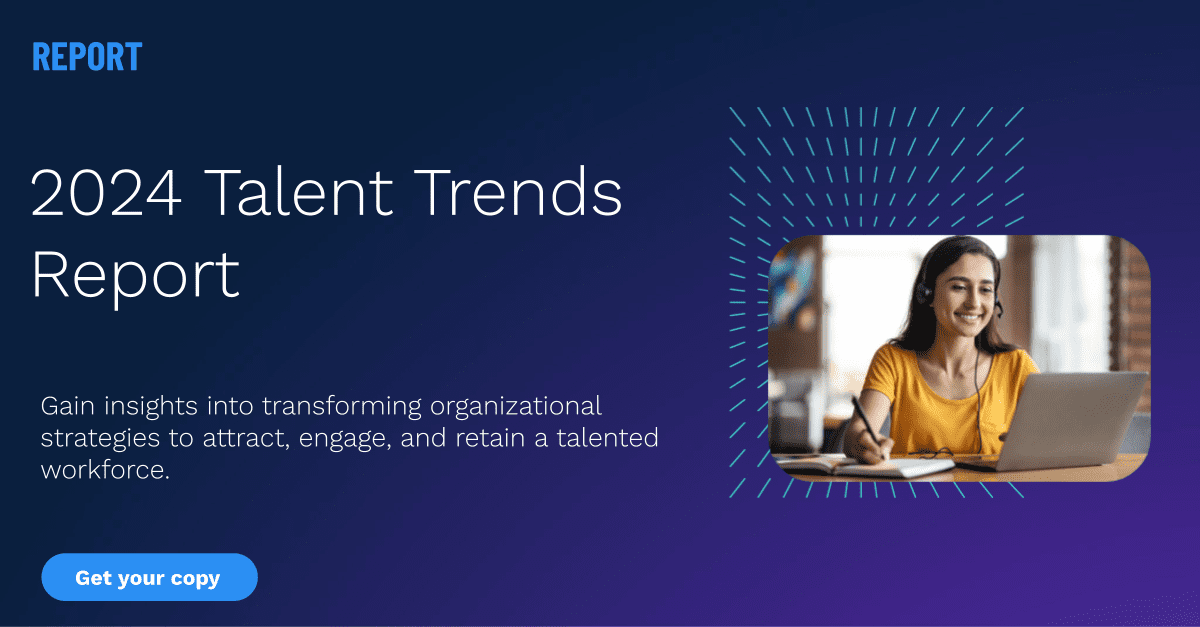From job seeker to candidate to new hire is a journey hardly represented in just three steps. The candidate journey is a series of touchpoints and interactions that encompass the candidate’s full experience with an employer, from reach to retention. And while recruitment teams generally have this path broken out into each individual step, understanding what those steps look like from the candidate side can completely transform the way you think about your hiring process.
Steps within the candidate journey
The candidate journey has a significant impact on a candidate’s perception of the company and its brand. Providing candidates with an exceptional experience means paying close attention to their needs, wants, and expectations at each key stage of their journey:
- Awareness. At this stage, the candidate becomes aware of a job opening (and possibly the employer) for the first time. This can happen through various channels, such as job boards, company websites, social media or referrals from friends and colleagues.
- Consideration. In this stage, candidates evaluate the job opportunity and the company. They may research the company’s culture, values, and reputation to determine if it aligns with their career goals and values.
- Application. Candidates who decide to move forward with an application submit their resumes and other required materials through the company’s application process. This stage often includes creating an applicant profile and tailoring their application to the specific job.
- Screening. After submitting their application, candidates may go through an initial screening process, which can include resume reviews, phone screenings, or online assessments. This step is used to narrow down the pool of applicants.
- Interviews. Candidates who pass the screening phase are invited to participate in one or more interviews. These interviews can be conducted in various formats, such as phone, video or in-person.
- Assessment and testing. Some companies require candidates to complete assessments or tests relevant to the job, such as skills assessments, personality tests, or task-specific challenges.
- Decision and offer. Based on the interviews and assessments, the company makes a decision on whether to extend a job offer to the candidate. If the candidate is deemed a good fit, they will receive an offer.
- Onboarding. If the candidate accepts the job offer, they move into the onboarding phase, where they complete necessary paperwork, receive training, and integrate into the company’s culture.
- Rejection. For candidates not selected for the position, this stage marks the end of their journey with that particular job; however, it may not close the door on their relationship with the hiring company. By nurturing candidates within the talent pool, employers can maintain strong relationships and match talent with relevant opportunities in the future.
- Post-hire. Even after a candidate becomes an employee, their journey continues. This includes ongoing interactions and experiences with the company as they settle into their new role and environment.
Employers must manage the candidate journey effectively. A positive experience can enhance the company’s reputation and help attract top talent. Conversely, a negative experience deters potential candidates and damages the employer’s brand. Companies that focus on providing a positive and transparent candidate journey are more likely to attract, engage, and retain top talent.
How to streamline the candidate journey
To streamline the candidate journey and ensure you attract and retain the right people for every position, consider the following strategies:
1. Candidate-centric recruitment
Job candidates have the luxury of choice these days, and onerous application processes can discourage them from working with you. Put the candidate at the center of your recruitment processes. Ensure that every stage of the recruitment process is personalized to the candidate, emphasizing their needs and experience.
Next, build relationships with candidates. Even if they’re not right for the current job opening, they may be right for potential future opportunities.
After you’ve analyzed your processes from a candidate’s perspective, make appropriate changes. Modify various aspects of recruitment, such as targeted advertisements and focused recruitment campaigns.
2. Pre-application consideration
It’s important to start your efforts early. The candidate journey commences long before the application stage (awareness, consideration). Job seekers often form opinions about your company before they choose to apply.
To attract the right people, be sure to strengthen your employer branding to create a positive initial impression. Furthermore, design your processes to ensure that every interaction a potential candidate has with your company leaves a favorable impression.
3. Address candidate needs
Today’s job seekers prioritize transparency and communication. Identify and communicate how your job openings align with candidates’ career goals and fulfill their needs. Consider a candidate’s physiological, safety, belonging, esteem and self-actualization requirements, and how your company — and the specific position — can meet those needs.
4. Reevaluate the application process
Unnecessarily long applications can deter candidates. Start by going through the process yourself, and determine where you can streamline the application. For example, you can reduce application time and simplify the process by eliminating unnecessary fields.
When possible, offer candidates control over the application process. For example, if they’re selected to move forward, offer tools like self-scheduling interviews.
5. Provide realistic job previews
Showcasing your company culture and mission can help you find the right fit. Candidates can envision themselves working at your company when you offer them a realistic view of the job role and workplace. For example, create dedicated career pages that convey core values, team dynamics, and cultural aspects. Alternatively, you can use pre-employment assessments to help them understand your priorities and everyday operations.
6. Be consistent and transparent
Just as you want a consistent, high-performing employee, job candidates want you to demonstrate your own consistency and transparency. Always fulfill your commitments to candidates, such as estimated response times or application decisions. For example, use automation to ensure timely follow-up and communication with candidates throughout the recruitment process.
Approaching every job opening as a marketing campaign can help you strategize appropriately — and help you better assess how the process reflects your company’s image.
7. Don’t neglect the pre-boarding stage
Once you’ve selected a candidate, you might assume that the candidate journey is over. However, extending the candidate journey through pre-boarding can help your new hires stay engaged and get excited. Use this phase to foster a sense of commitment and enthusiasm in new hires. This reinforces their decision to join the team and can reduce the risk of attrition shortly after the recruitment process.
Attract the candidates you need with Symphony Talent
Implementing these strategies can help create a seamless and positive candidate journey — and improve your company brand at the same time. Symphony Talent is dedicated to helping employers streamline and improve their recruitment marketing and branding practices. From smart automation to recruitment outreach strategies, we can help you launch new campaigns and find the right employees. Reach out today to schedule a consultation.



